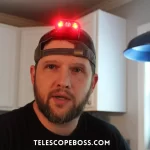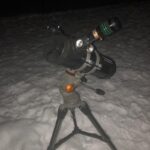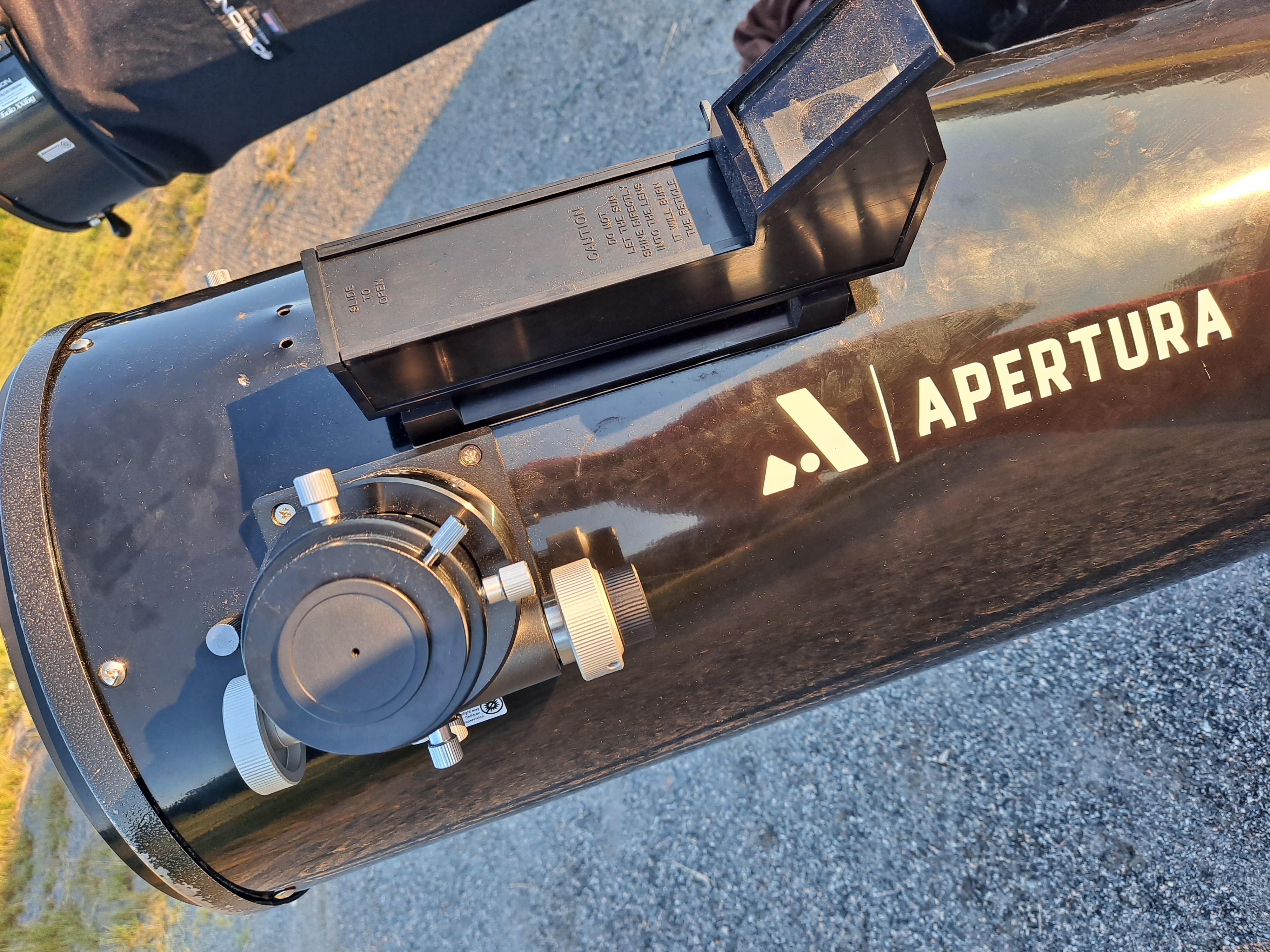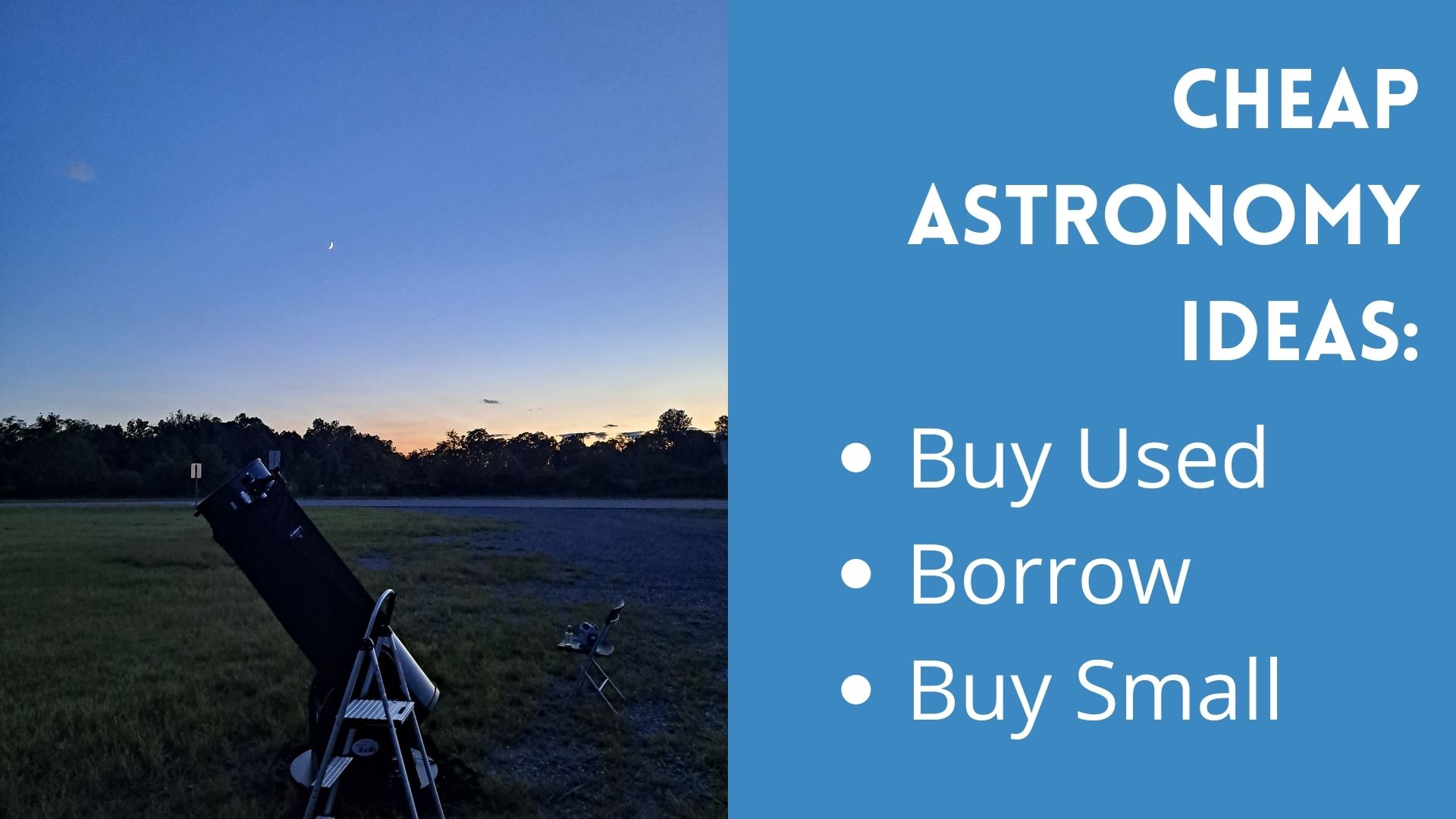1. Dust Caps On
The first reason you may not be able to see through your telescope is that you forgot to remove the dust cap or eyepiece cover.
Your dust cap may have a hole in it and you may have just removed the small cap, but the whole cap should be removed.
Some eyepieces have caps on one or both ends of the eyepiece. These also need to be removed before you can use the telescope.
This is a common mistake, and even if you think you have removed all covers, check by looking right into your focuser during the day and make sure you can see light.
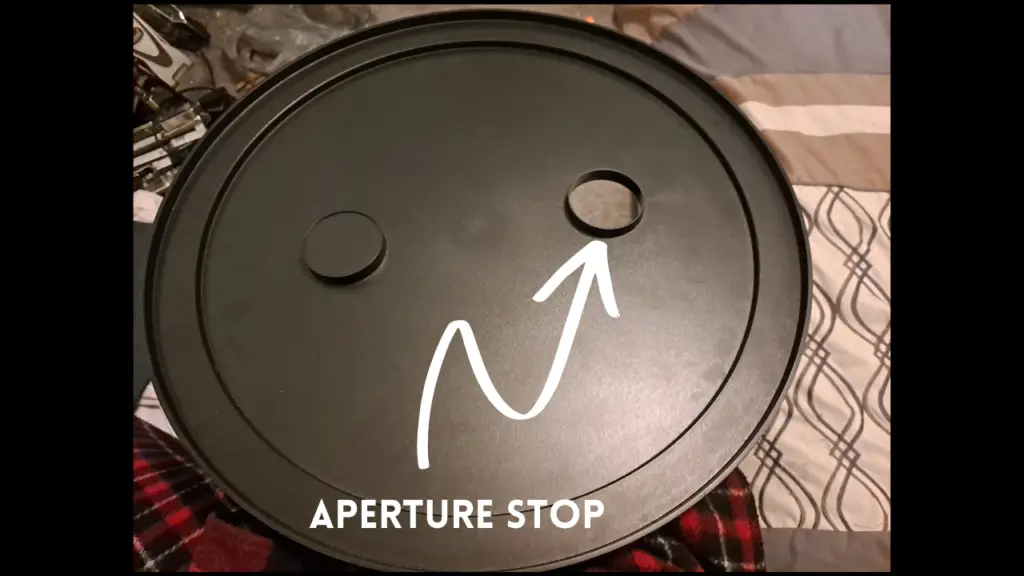
2. Not in Focus
A telescope that is extremely out of focus may not allow any light to the eyepiece.
Start correcting focus by using your lowest power eyepiece (the eyepiece that has the highest number will be the lowest power) to try to focus on a bright object. If you are very very out of focus you should be able to point the telescope at the moon and see light, even if it is just fuzzy.
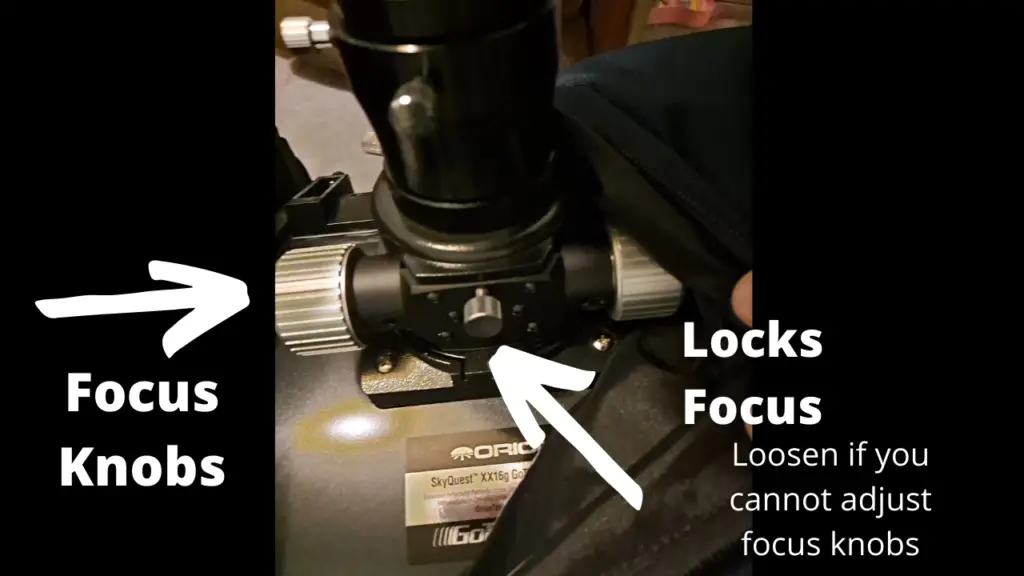
Turn your focuser all the way in and all the way out. You should be able to start to see the craters come into focus. If you cannot achieve focus, you may need to pull your eyepiece out of the focuser a little, tighten it in that place. This gives you a bit more travel.
Many telescopes come with an extension tube that gives you more space to reach focus. When I was new to the hobby, I used to use this all the time to achieve focus. It is really a helpful accessory.
Be sure you have given your telescope time to cool down or heat up to ambient temperatures before attempting to focus. Acclimating your scope is more important than you might think. You can read our handy guide to acclimation linked here.
You may also be concerned about collimation, but that is a topic too big for this post, you can read about collimation for Dobsonian Telescopes in this linked post.
3. Finderscope not aligned
Your finderscope needs to be aligned with your telescope, when your finderscope is not aligned with your telescope you may not be looking exactly where you think you are. This may make it appear that you cannot see anything through your telescope.
You should do this during the day by pointing your telescope at a distant object like a telephone pole down the road, you can even do this from inside the house if it is convenient.
Center the object in finder, with your lowest power eyepiece try to look for the object in your telescope. Be patient, this may take longer than you think it should.
When you have the object centered in your telescope, tighten it down and go back to the finderscope and use the screws to adjust the finderscope so the object is in the exact center again.
The adjustments you are making will be to the finderscope not the telescope.
Put in your highest power eyepiece then do the whole process again. You will need to be patient as this can be tedious. When you have done this be sure that your finderscope is secure in place.
One other thing about finderscopes, if it is a red dot finder, be sure that you have installed the batteries.
4. Magnification Is Too High
When we talk about magnification with telescopes, we often say ‘useful magnification’ because higher magnification is not always better.
The amount of magnification that you can use on a given night depends on the weather conditions. The stability of the atmosphere or the seeing conditions vary from night to night. It can be like looking through hot air, it distorts the image beyond it.
So, if you are not able to see through your telescope, it is possible that you are attempting to use a magnification that is too high for the conditions.
Choose the eyepiece that has the highest number, this will have the lowest magnification. If you can see with this eyepiece, but not the other one, then your issue was magnification.
Start with your lowest power, then gradually increase the magnification to see what your useful magnification is for that night. If something works on one night, but not on another, it may be a magnification problem.
Zoom eyepieces are capable of producing a wide range of magnifications. If you have a zoom lens available you may want to use it to play with different levels of magnification. When you have found the best useful magnification with a zoom lens, you will want to switch to a
5. Filter
Filters are small disks that screw onto the back of an eyepiece. They are designed to block out certain kinds of light. Looking through a telescope at a dim object with a filter will make it appear very dim, it is possible that you will not be able to see at all.
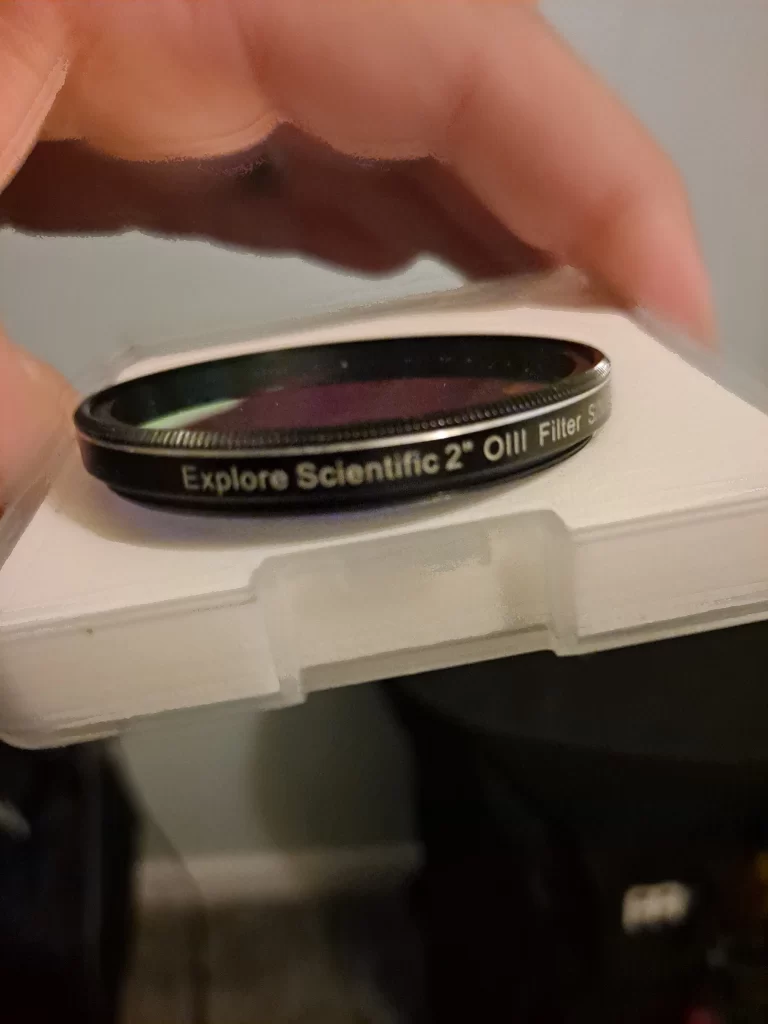
Because filters screw into eyepieces, you may not notice if one is attached to your eyepiece.
Check the back of your eyepiece and see if there is a filter installed, if so remove the filter and you can keep it in your eyepiece case.
You can find our guide to DIY eyepiece cases in the linked post.
6. No eyepiece
Telescopes require an eyepiece in the focuser. Looking through a telescope without an eyepiece installed will not give you a clear image.
Reflector telescopes use mirrors to collect and focus the light, so if it is bright enough you may see your own reflection or you may just see your mirrors. If it is very dark you may not see anything.
Eyepieces come in many shapes and sizes, but they will fit right into the focuser, which is where you look into the telescope.
7. Eye is too close to the eyepiece
A less common issue is that your eye is too close to the eyepiece. This can be corrected by moving your eye away from the optical glass.
Try looking through the telescope with a different eyepiece.
Some eyepieces can cause “blackouts” when your eye is not the correct distance from the eyepiece.
If your eyepiece has folding or twisting eye cups, try adjusting those. An observing chair can help you find more comfortable observing positions with finicky eyepieces.
Why can’t I focus my telescope?
It can be very frustrating to know if focus is the problem with your telescope if you have never been able to see through it.
Try to focus the telescope by moving the knob all the way out and all the way in. When you have tried this with one eyepiece, try it with another one. If you have turned the knob all the way out, you can raise your eyepiece out further as well. I have a few eyepieces that require that.
You can work on finding focus during the day as well, when you are inside and not pressured. Try aiming your telescope at a distant object like a telephone poll down the street and seeing how crisp you can get the image. Note the adjustments you make and repeat these actions when you are in the field.
Still Can’t See Through Your Telescope?
If you have tried everything above and you still cannot see through your telescope I have a few more recommendations:
1. Reach out on Facebook
Join a Facebook group and ask there for help with your telescope. There may be problems that are common with your make and model.
Most astronomers remember being new to the hobby. It is normal to have a lot of questions. I asked so many questions and the learning curve is so steep. Don’t be afraid to ask questions.
If you are a bit shy, you can always search the group to see what has been asked in the past, this may give you all the information you need right away.
2. Reach out on Cloudy Nights
Cloudy Nights is a very active Astronomy forum website. There are hundreds and hundreds of archived posts that have a lot of great, first-hand information. You can likely find what you need to know there without needing to make your own account.
3. Search for a local astronomy group
I like to talk to a real person, it is how I learn best and before I even assembled my first telescope I drove out to the nearest city to meet the astronomy club.
I have not been able to go to any more meetups, but I got contact information for a few of the guys and they have been really helpful. I also got to observe with their equipment, learn about local events and star parties.

